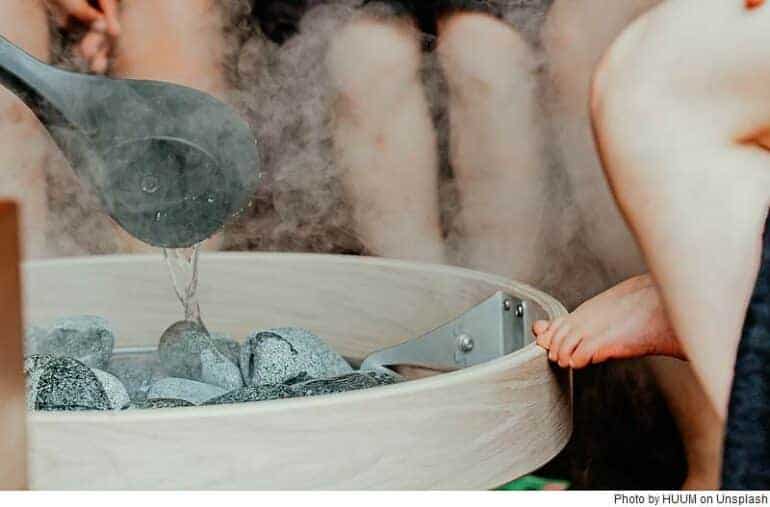How good are sauna sessions for the bones?
Human bones could almost be called a miracle of nature. On the one hand they are soft and elastic, on the other hand they have extraordinary strength. This contradiction between their properties accounts for their extraordinary stability. Our bones consist of living, active tissue. Bone density, and bone structure, contribute to their stability.
Both bone density and bone shape change throughout life, as does bone stability. Around the age of 35, they reach their greatest stability. After that, it decreases. If the bone density falls below a certain threshold, which can be determined by a bone density measurement, this is referred to as osteoporosis or bone loss.
Heat stress leads to activation of heat shock proteins
Temporary exposure to heat stresses the body and triggers a number of protective responses during sauna use. There is evidence that heat stress promotes muscle development by activating signaling pathways involved in protein synthesis, and that osteogenesis, i.e., the formation of new bone tissue, is initiated by the activation of heat shock proteins.
Experimental study on 23 subjects
23 healthy young men with an average age of about 20 years participated in the intervention study¹. The participants completed questionnaires on dietary behavior and physical activity. Half of the subjects participated in 12 sauna sessions, which occurred three times per week over a four-week period. Each session included five 10-minute sauna sessions at 100 °C (212 °F), followed by a five-minute recovery period at 22 °C (room temperature) (71,6 °F) between sessions. During the study, the other half of the participants went about their normal activities. Body composition was assessed before the first sauna session, after the last sauna session, and two weeks later using bioelectrical impedance and dual-energy X-ray absorptiometry (DEXA).
During the course of the study, the fat mass of the participants did not change. Nevertheless, DEXA scans showed that the men who participated in sauna sessions had greater muscle mass, higher bone mineral content, and higher bone mineral density compared to the men who did not sauna. These results suggest that heat stress induced by sauna visits leads to positive changes in lean body mass.
To explain the term:
What exactly is meant by heat shock proteins?
Heat shock proteins (HSPs) are proteins that are produced when cells are exposed to temperatures above their normal growth temperature for a short period of time. Synthesis of HSPs is a phenomenon that occurs in all plant and animal species studied, including humans. HSPs are produced by prokaryotic cells, i.e., bacteria and archaea. HSPs are commonly referred to as “stress proteins” because they can be activated by oxidants, toxins, heavy metals, free radicals, viruses, and other stressors.
How heat shock proteins work
Most HSPs are molecular chaperones that generally facilitate the self-assembly of freshly produced polypeptide chains of proteins into their original spatial structure, the assembly of their complexes, their transport across membranes, and their participation in signal transduction. A non-lethal increase in temperature above the physiological norm inhibits protein synthesis in the cell, activates heat shock factor (HSF), and promotes transcription of heat shock genes.
Upon lethal temperature stress, apoptosis or programmed cell death is induced. Upon re-exposure, HSPs suppress apoptosis and provide thermal stability to cells. Thus, chaperones prevent irreversible aggregation of unfolded proteins and facilitate restoration of their original structure and/or destruction of denatured proteins.
¹https://www.mdpi.com/1660-4601/18/9/4458/htm

